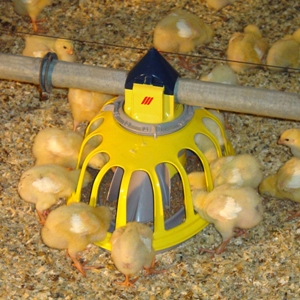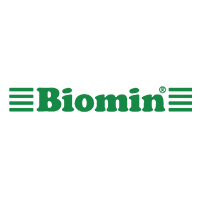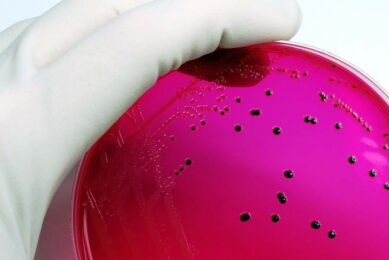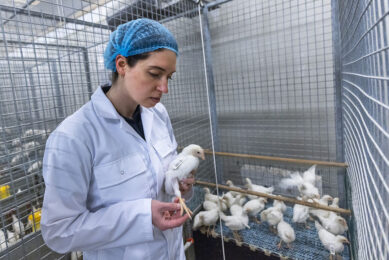Using probiotics in a practical way

There are several alternative probiotics on the market, all with inherent advantages and disadvantages depending on the nature of the organisms and the treatment that the final product receives. Understanding these advantages and disadvantages allows them to be used effectively.
By Biomin, Austria
Starting during the seventies of the last century, after the discovery that young birds consuming faeces from adult birds were more resistant to Salmonella infections, probiotics in animal production have gained a lot of attention. A spectacular boost in research and overall market share of natural products for poultry was experienced at the end of the nineties due to the banning of antibiotics used as growth promoters in the European Union. Due to this regulation, classical diseases inherent to intensive poultry production systems that were once very well controlled with the use of low doses of antibiotics are now recovering momentum (necrotic enteritis).
Defined and undefined cultures
Undefined cultures are a collection of bacterial species. The numerically most predominant bacterial species are normally identified within these products. Undefined cultures tend to be a rapid solution to satisfy many markets. This is due to the lower cost of production when compared to defined cultures. If the selection process is carefully conducted and bacteria from healthy birds is collected and multiplied under appropriate conditions several key bacterial strains tend to remain stable and can be recovered after producing many batches of the original cultures.
One of the general concerns when using undefined probiotic cultures is the theoretical lack of consistency of the final product. It is likely that slight variations in the raw materials will change the rate in which different bacterial species multiply. This will probably result in a different performance of these probiotics under field conditions. We should always keep in mind that only a fraction of intestinal bacteria can be cultured using standard laboratory techniques and it is likely that the strains and or proportions of the strains contained in these products will change over time.
Probably the main factor that makes these products unacceptable in several markets is that hidden within the bulk of beneficial bacteria some pathogens could be propagating in low numbers. Favourable conditions, like application of the product in immune suppressed birds, could cause rapid propagation of these potential pathogens. In addition, if a defined list of bacteria is missing it is impossible to determine the risk of introducing antibiotic resistance genes into bacteria of the host’s intestinal tract, for example by plasmid transfer.
Sporulated and non-sporulated
Sporulation confers an excellent method to protect bacteria against physical damage. From this starting point several advantages can be surmised. For instance, the issues of shelf life and storing conditions seem irrelevant when considering that spores can remain viable for hundreds of years. One of the main advantages of spores is that they can be easily incorporated into feed tolerating pelleting processes with minimal reductions in viability.
Similarly, passage through the stomach should not be a problem for a spore. However, all those advantages seem to pale if the natural habitat of the most currently used sporulated bacteria is considered: Bacillus sp. are well recognised as environmental bacteria. This apparently simple statement draws a question mark on most scientific evidence supporting the effect of the vegetative form of these bacteria against pathogens. By definition a dormant life form does not utilise a lot of environmental resources and thus not very many biochemical reactions are taking place.
Competition for available nutrients, production of antibacterial substances, direct inhibition of pathogens, and probably even active attachment and competition for binding sites are all doubtful in case spores are not able to transform into vegetative cells inside the intestinal tract. Valid scientific evidence should address possible mechanisms of action in vivo.
No better place
In contrast to spores, when considering long storing periods, pelleting and passage through the stomach the non sporulated bacteria seem fragile. Some of these weaknesses can be partially solved by a coating treatment if the bacteria are to be mixed in feed that will be pelleted. Quality of the coating will determine the cell viability after pelleting and after passage through the stomach. Despite all these weaknesses, when vegetative probiotics (of intestinal origin) reach the intestine they are “at home”.
If the probiotic originate from a compatible animal – or even better from the same animal species- there will be no better place for these bacteria to grow, replicate, compete for nutrients, attach to cellular receptors, and to interact with the host than in the intestine. From this point of view there is a huge potential for future development of probiotics. It is very likely that in the in vitro process of screening we have lost excellent candidates due to our current inability to create a model that closely resembles the intestinal tract. It is becoming increasingly clear that interaction between bacteria and their environment is very important when analysing the efficacy of probiotics. For example, Peptostreptococcus isolated from humans produces an antibacterial substance which is secreted as an inactive compound and depends on the enzymatic activity of pancreatic trypsin for its activation.
Once activated, this substance is active against several Gram-positive pathogens. It has also been observed that the ability of B. Lactis bacteria to bind mucus can be potentiated by the presence of L. bulgaricus bacteria.
Defining the perfect probiotic
As discussed in the previous section there is no perfect probiotic yet identified due to the discrepancy between reliable proofs of efficacy vs. stability. Poultry producers often have to choose between these two criteria. However, from the poultry producer’s point of view it may be safer to select efficacy over stability for a simple reason: it is easy to check for stability and it can be demanded to the probiotic manufacturer.
If the manufacturer claims a certain amount of viable CFU after pelleting or after 6 months of storage the producer is only a few samples away from the truth. On the other hand there is no insurance for efficacy. There are too many factors that can compromise efficacy of a product in the field: diseases, nutrition, immune status of the flock, and stress factors in general; as a consequence it is difficult for the poultry producer to evaluate the field efficacy of a given product.
When selecting for a probiotic it is important to consider the natural abilities of the candidates to inhibit the growth of certain pathogens. In vitro screening is common to quickly detect inhibition between two species of bacteria. It is important to consider that not always the reactions seen in vitrowill be present in the gastrointestinal tract. The gastrointestinal tract is an extremely harsh environment where only well adapted organisms can survive.
By developing probiotic products containing bacterial strains from different regions of the intestine we can be sure that mores niches will be covered by a product. This can be of special relevance when a decrease in the number of pathogenic organisms is not enough like in the case of Salmonella enteritidis. In many countries of the European Union Salmonella must be completely absent in broiler flocks and the same regulation has started for turkeys. Failure to comply with this regulation leads to the sacrifice of the entire flock.
MORE INFORMATION References are available upon request |













